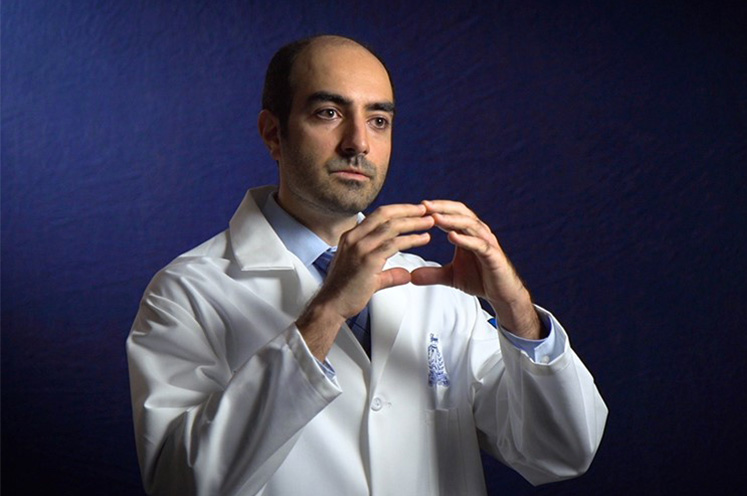Astigmatism and Eye Surgery
If you have an astigmatism, eye surgery may be an option to address it.
Astigmatism is a common refractive error that occurs when the cornea has multiple curvatures. A normal cornea is round in shape, like a basketball, while an astigmatic cornea is shaped like a football. This means that one direction of the cornea has more strength than the other, and light is not focused evenly onto the retina. This can cause:
- Blurry or distorted vision
- Headaches
- Eye strain
- Squinting
- Difficulty driving at night

Take the Next Step
Let us help you schedule an appointment with a board-certified ophthalmologist.
Misconceptions about astigmatism
- What it is: Astigmatism is an eye condition, not a disease.
- Who it affects: Astigmatism is a common refractive error that affects people with nearsightedness or farsightedness.
- How it’s caused: Poor vision habits such as reading in low light or sitting close to the TV don’t cause astigmatism, which in many cases is inherited. However, it may also develop after an eye disease, injury or surgery.
- It’s the same for everyone: There are two major types of astigmatism, regular and irregular, which affect people differently. Some have a mild case that doesn’t noticeably affect vision, while others have such a significant astigmatism that it can affect quality of life. If you suspect you or a loved one has an astigmatism, this can be diagnosed through a comprehensive dilated eye exam.
- There is no treatment: When it begins to affect vision, most cases can be corrected through special glasses or contact lenses. However, if you want to reduce your dependence on glasses or contacts while addressing your astigmatism, eye surgery may be an option.
Addressing astigmatism through eye surgery
There are several eye surgeries that can be used to help address astigmatism, including:
- Laser vision correction: With LASIK and PRK, both of which reshape your cornea to improve your visual acuity, your Henry Ford surgeon can treat certain cases of astigmatism with the laser itself.
- Cataract surgery: For those with astigmatism, a toric replacement lens implanted during cataract surgery may help reduce or eliminate astigmatism.
- Refractive lens exchange: People may elect to have refractive lens exchange to address a high degree of nearsightedness or farsightedness, or presbyopia – a natural, age-related decrease in reading vision. As with cataract surgery, a toric replacement lens implanted during the procedure may help reduce or eliminate astigmatism.
- Limbal relaxing incisions: During this procedure, your surgeon makes tiny incisions in the cornea that help to reshape it and address astigmatism. Depending on the individual, this may be performed as part of cataract surgery or refractive lens exchange.
Astigmatism, eye surgery and outcomes
Henry Ford is a leader in refractive surgery, using the latest in refractive technology to correct refractive errors such as astigmatism. Our expert surgeons will complete a thorough evaluation of your eyes and recommend the procedure we feel is safest and best for your eyes. The goal with any refractive surgery is to reduce your dependence on glasses or contacts, but it’s important to understand that since everyone’s eyes are unique, outcomes vary.
.svg?iar=0&hash=F6049510E33E4E6D8196C26CCC0A64A4)

/hfh-logo-main--white.svg?iar=0&hash=ED491CBFADFB7670FAE94559C98D7798)
